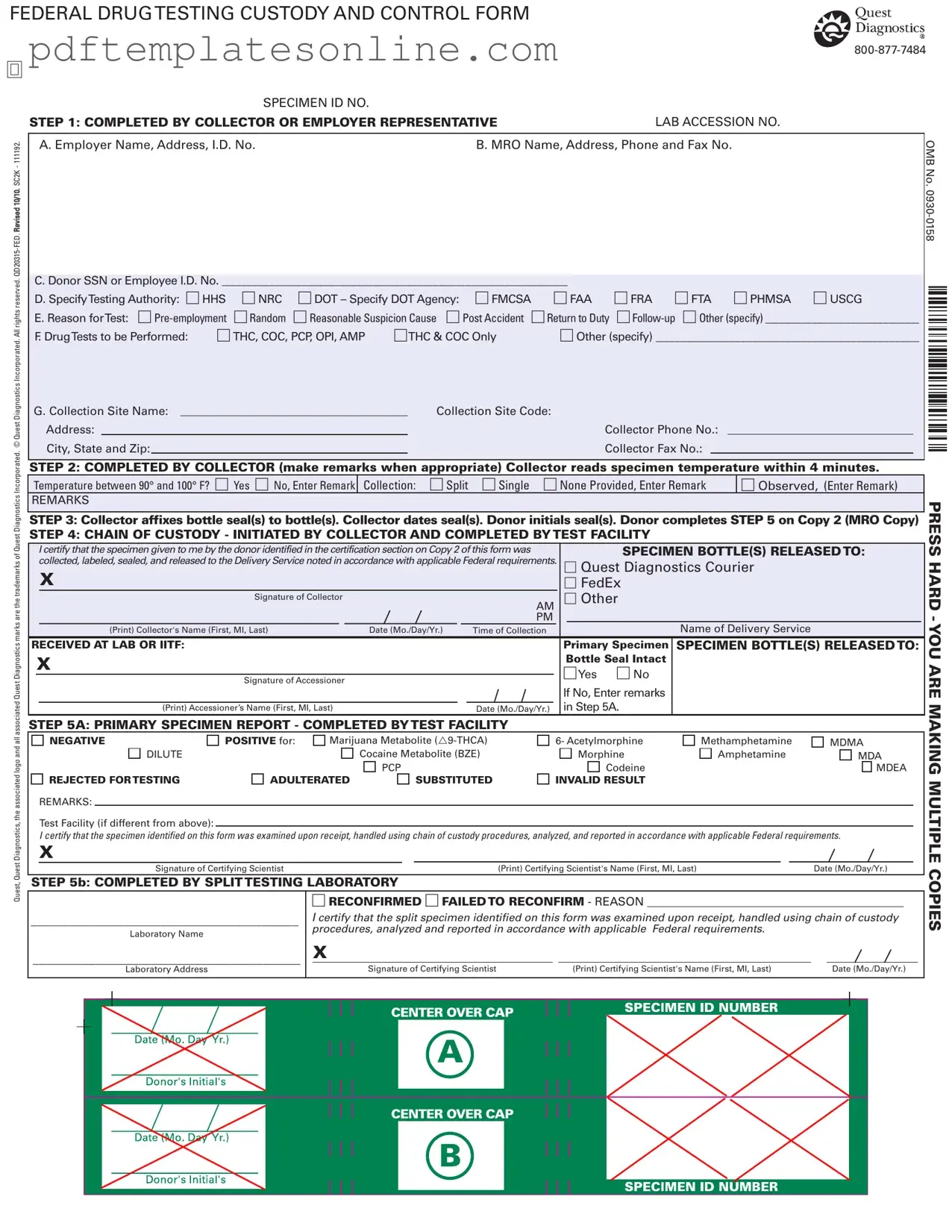When filling out the Drug Screen form, individuals often make several common mistakes that can lead to complications in the testing process. Understanding these errors can help ensure a smoother experience for everyone involved.
One frequent mistake is failing to provide complete information in the designated fields. For example, omitting the Employer Name or Donor SSN can create delays. Each section of the form is crucial, and missing details can result in the form being rejected or the test being invalidated.
Another common error is incorrectly selecting the Reason for Test. This section is vital as it determines the context of the drug screening. If a donor selects “Random” when the test is actually for “Post Accident,” it can lead to misunderstandings and potential legal issues.
Some individuals also misinterpret the Drug Tests to be Performed section. Failing to specify the correct drugs can lead to incomplete testing. For instance, if someone intends to test for THC and fails to indicate that, the results may not reflect the necessary substances, leading to inaccurate conclusions.
Additionally, mistakes can occur in the Chain of Custody section. This part requires careful attention to detail. If the collector does not sign or date the form properly, it can compromise the integrity of the test. Proper signatures and timestamps are essential for maintaining a valid chain of custody.
Another issue arises with the temperature reading of the specimen. If the collector does not check the specimen temperature within the required time frame, or if they fail to record it accurately, the sample may be deemed invalid. This step is critical for ensuring the sample's authenticity.
Moreover, some individuals overlook the importance of the Collector Remarks. This section allows for additional notes that can clarify any unusual circumstances surrounding the collection. Failing to include relevant remarks can lead to confusion or misinterpretation of the results.
Lastly, not following up on the Split Testing Laboratory section can lead to complications if a split specimen is required. If a donor does not understand the implications of this section, they may miss the opportunity to contest a positive result, which could have significant repercussions for their employment.
By being aware of these common mistakes, individuals can better navigate the Drug Screen form process, ensuring that all necessary information is accurately completed and that the testing proceeds without unnecessary complications.
